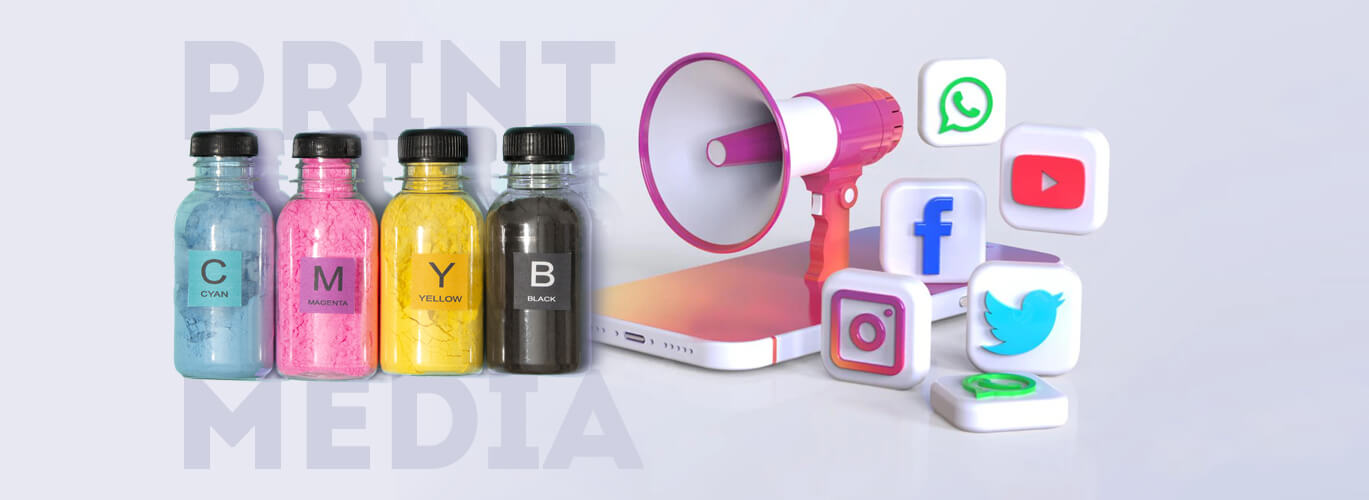Newspapers are the most popular form of printed media and media houses are not in the business of ink and paper but are in the business of relevant content.
Marketing Evolved Over the Years
It developed rather recently but digital marketing has occupied every aspect of our lives. Before all the social media ads and flashy TV commercials, there was a different system in existence which was the print media.
Print media from the 15th till the 20th century, comprising newspapers, magazines, and billboards, was the prime channel of advertising.
The emergence of new mediums of advertising viz. radio, television and telephones were seen in the first half of the 20th century. TV ad revenue surpassing radio and magazine ad sales and telemarketing emerged as the most common marketing tactic seen in the second half of the 20th century.
In the end of the 20th century, newspaper ad revenue was in the billions as print advertising was made simple owing to the arrival of personal computers and desktops. During the same time, mobile phones achieved popularity thereby making SMS marketing possible.
This period also witnessed the first automated large-scale commercial use of spam emails for promotional purposes. Soon, search engines established by Yahoo (1995), Ask.com (1997) and Google & MSN (1998) attained popularity as the term “search engine optimization” emerged.
Print media v/s social media
People still argue that print will never truly be erased because it provides readers a fully different experience to social media. While buying a newspaper it’s yours forever, you’re free to collect, hoard and share it as you see fit. As a result, readers achieve a sensory experience with newspapers and studies have shown that we gain knowledge and experiences better through physical interaction.
Even though newspapers include adverts they’re easier on the eyes as ads aren’t continuously popping up on the already packed screen of your smartphone. In newspapers news is also presented clearly as per the importance of the news. Readers can find the most important news stories from page one to six where features and sports results are found towards the back of the paper.
Anyhow, newspapers cannot compete with the 24 hours news cycle and breaking news in the way social media does. Nor can it provide instant features, visuals, infographics, videos and public opinion in the way social media does from the Twittersphere, meaning its readership is limited.
On the other hand, social media delivers a new level of interactivity and discussion as well as an audience with anyone who make use of a social media platform. You get readership feedback, user generated content, and social sharing as well as a means to read breaking news on the go in a world that doesn’t stop moving with social media.
The main thing print media trumps social media on is credibility as with social media, anyone has the possibility to be heard. This enables people to share their views on a global scale, but if the writer is not considered an expert, it can also lead to a loss of credibility. Furthermore some may be not aware that copying the words of someone who is not an expert is plagiarism. This highlights how popularity does not necessarily mean credibility.
The Downside To Traditional Marketing
- Little to no interaction with your audience
- Very costly
- Results cannot be measured
- Difficult to receive feedback from the customers
- High bounce rates and poor conversion ratio
Benefits Of Social Media Marketing
- It is easier to know your audience
- Audience targeting made possible
- Increased exposure
- Cost efficient
- Developing a solid fan base of loyal customers
- Establishing authority in the online domain
- Quick feedback and customer service
- Community building
However, social media marketing has completely revolutionised marketing, some retailers continue to utilise traditional ways and are yet to fully accept the paradigm shift to the digital world. Even so, it is difficult to say whether print media will survive the change. We can ensure that social media marketing is here to stay and will envelope the world in the coming years.






